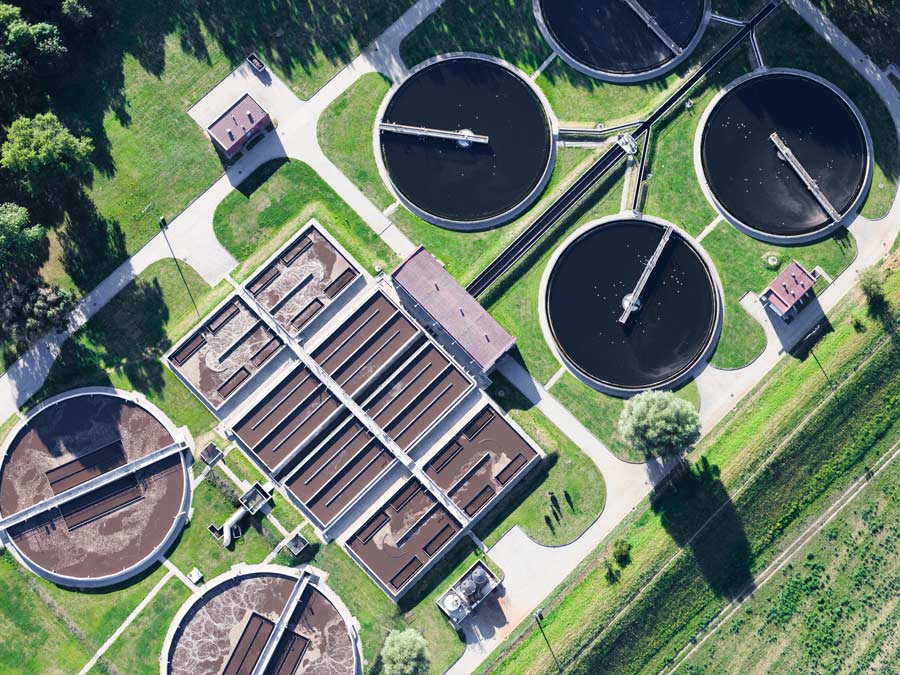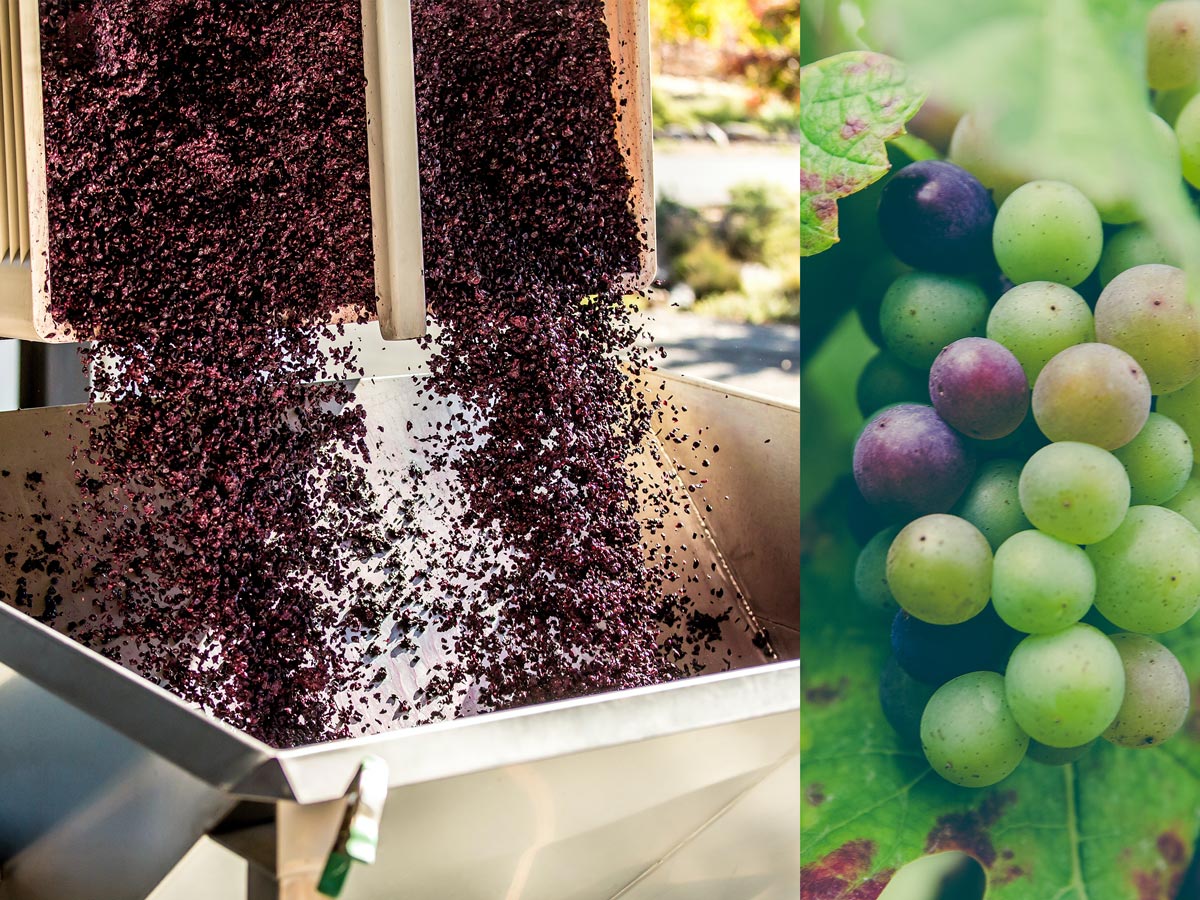People, planet, prosperity: Working together towards a sustainable future
Innovation Issue 35: Fall 2021
Fermenting change: New treatment solutions for winery wastewater

Fermenting change: New treatment solutions for winery wastewater
The Niagara region is home to about half of Ontario’s wineries, and as winemakers harvest grapes and bottle their vintages each year, thousands of cubic metres of winery wastewater is created and hauled to local municipal wastewater treatment plants.
This seasonal influx of wastewater presents a processing challenge for municipal wastewater treatment plants. The waste is about a thousand times more concentrated in terms of organics per litre than average household wastewater, causing a “shock” to the treatment system. Chemical engineering PhD candidate Melody Johnson and professor Mehrab Mehrvar have addressed this issue by developing an innovative new process for treating winery wastewater. They recently filed a provisional patent for the process.
Their research showed that for each litre of wine bottled, four litres of water are consumed and four litres of wastewater are created. They calculated the greywater footprint – the volume of freshwater in rivers and lakes needed to dilute the pollutants – of a litre of wine created in the Niagara region. For each litre of winery wastewater treated by the municipality, there is an estimated greywater footprint of 960 litres. Even if the water is treated, Johnson notes that their findings, which are part of her doctoral dissertation, show there is an environmental impact on Lake Ontario.
While many wineries do treat their own wastewater on-site during harvest or bottling season, the sheer volume of wastewater is enough to require trucking excess wastewater to municipal plants. In 2018, the volume of winery wastewater sent to the Regional Municipality of Niagara’s treatment plants was 25,120 cubic litres. That’s a substantial increase from the 2008 volume of 9,365 cubic litres sent for treatment. Johnson knew, from her 17 years of industrial experience as a process engineer troubleshooting the performance of municipal treatment plants, that such concentrated wastewater can cause operational issues at the plants.

The seasonal nature of winery wastewater presents a challenge for conventional municipal wastewater treatment plants. “What required the real innovation was coming up with a way to treat the winery wastewater biologically but with near instantaneous startup,” said Johnson. After determining that a biological system would be preferable to a chemical one, they had to tackle the challenge presented by the fact that the micro-organisms used to treat regular wastewater prefer consistency, which isn’t offered by winery wastewater.
Johnson and professor Mehrvar have provisionally patented a system called the Waste Activated Sludge High Rate (WASHR) treatment system that uses two waste streams at municipal plants to treat winery wastewater.
Excess biomass is generated in the wastewater treatment plant’s main aerobic bioreactors, which use bacteria to clean wastewater. The WASHR process uses this excess biomass to remove organics from the winery wastewater. This biomass is called waste-activated sludge and is typically disposed of as a byproduct of the main treatment system. The WASHR process harnesses the bacteria in this sludge to digest the organics in the winery wastewater, representing a novel use of the biomass.
If the winery wastewater is low in nutrients required by the biomass, a second waste stream can be used as part of the WASHR process. This stream uses clarified, nutrient-rich water that is a byproduct from the main water treatment plant’s sludge digestion system, and is usually recycled to the plant’s main bioreactors. But with WASHR, this clarified water can be added to the winery wastewater, increasing the levels of beneficial nutrients like nitrogen and phosphorus, making the process more effective.
Johnson explained the WASHR system would be a short process where the water treatment tanks are completely empty at the beginning and the end of the winery wastewater treatment process, leaving them available immediately for the next use. Professor Mehrvar noted that the system requires no special preparation: “As soon as the winery wastewater comes, we can pre-treat it and then we can integrate it with the ongoing municipal wastewater treatment plants. That’s the beauty of our system,” he said.
As part of their research and development of the WASHR process, they studied the economic viability and environmental sustainability of their proposed plan. They found that it was economically similar to treating the wastewater directly in the regular streams in the plants. WASHR’s greenhouse gas emission production was significantly lower than the emissions produced by sending the winery wastewater to the regular anaerobic treatment process, and emissions were only slightly higher than using the regular treatment streams. However, with this process, municipalities wouldn’t have to oversize their tanks to accommodate the occasional influx caused by the seasonal nature of winery operations.
“So, we have a solution that is easy to operate, optimizes the use of waste streams at municipal treatment plants, and is both economically viable and environmentally sustainable,” said Johnson.
The researchers said the process has potential applications for treating other “strong” wastewaters, such as dairy wastewater or in municipalities where septic tank cleanout is seasonal.

We have a solution that is easy to operate, optimizes the use of waste streams at municipal treatment plants, and is both economically viable and environmentally sustainable.

Support for this research was provided by the Natural Sciences and Engineering Research Council of Canada, Ryerson’s Faculty of Engineering and Architectural Science and the Regional Municipality of Niagara.
